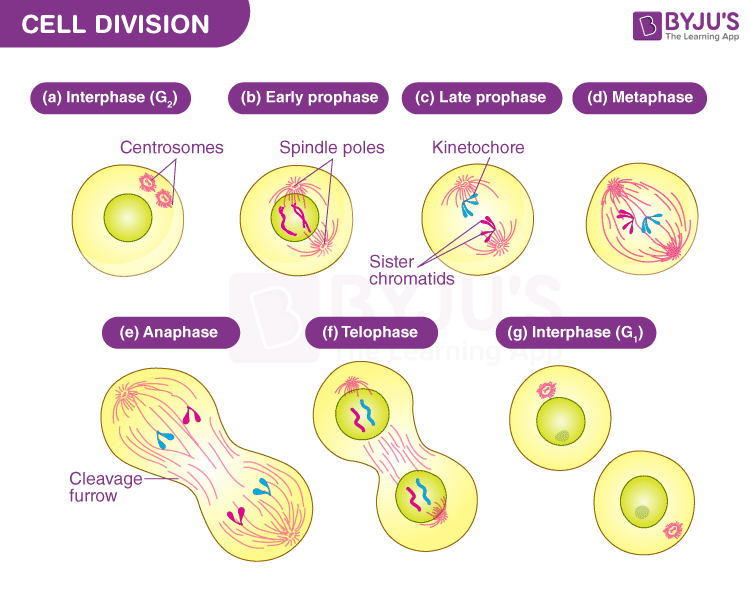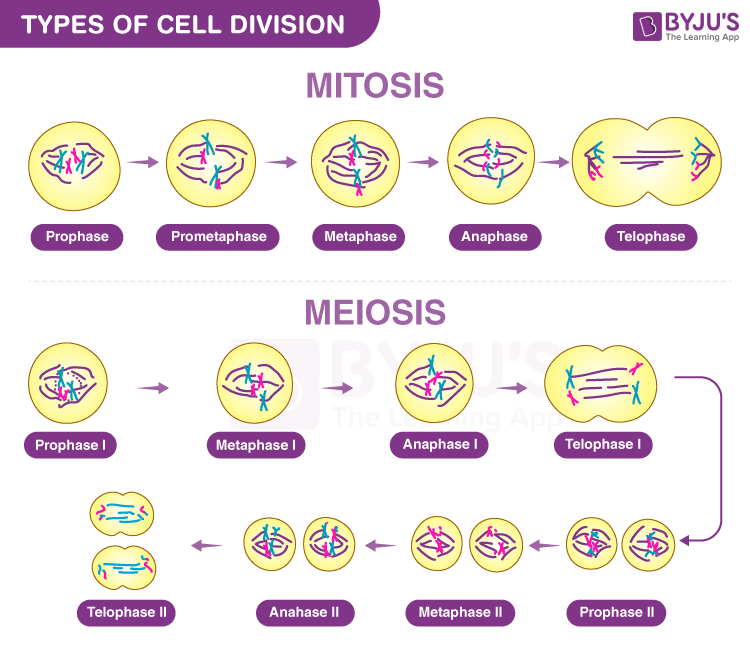Cell division happens when a parent cell divides into two or more cells called daughter cells. Cell division usually occurs as part of a larger cell cycle. All cells reproduce by splitting into two, where each parental cell gives rise to two daughter cells.

These newly formed daughter cells could themselves divide and grow, giving rise to a new cell population that is formed by the division and growth of a single parental cell and its descendant.
In other words, such cycles of growth and division allow a single cell to form a structure consisting of millions of cells.

Explore the cell division notes to learn about the types and phases of cell division.
Recommended Video:

Types of Cell Division
There are two distinct types of cell division out of which the first one is vegetative division, wherein each daughter cell duplicates the parent cell called mitosis. The second one is meiosis, which divides into four haploid daughter cells.

Mitosis: The process cells use to make exact replicas of themselves. Mitosis is observed in almost all the body’s cells, including eyes, skin, hair, and muscle cells.
Meiosis: In this type of cell division, sperm or egg cells are produced instead of identical daughter cells as in mitosis.
Binary Fission: Single-celled organisms like bacteria replicate themselves for reproduction.
Phases of the Cell Cycle
There are two primary phases in the cell cycle:
- Interphase: This phase was thought to represent the resting stage between subsequent cell divisions, but new research has shown that it is a very active phase.
- M Phase (Mitosis phase): This is where the actual cell division occurs. There are two key steps in this phase, namely cytokinesis and karyokinesis.
The interphase further comprises three phases:
- G0 Phase (Resting Phase): The cell neither divides nor prepares itself for the division.
- G1 Phase (Gap 1): The cell is metabolically active and grows continuously during this phase.
- S phase (Synthesis): The DNA replication or synthesis occurs during this stage.
- G2 phase (Gap 2): Protein synthesis happens in this phase.
- Quiescent Stage (G0): The cells that do not undergo further division exits the G1 phase and enters an inactive stage. This stage is known as the quiescent stage (G0) of the cell cycle.
There are four stages in the M Phase, namely:
- Prophase
- Metaphase
- Anaphase
- Telophase
To know more about cell division or other related cell division topics, refer to cell division notes by registering at BYJU’S.


Thanks
the information was really helpful
Thanks wonderful teaching and wonderful teacher’s ☺️☺️
Thank you so much
thanks for the information